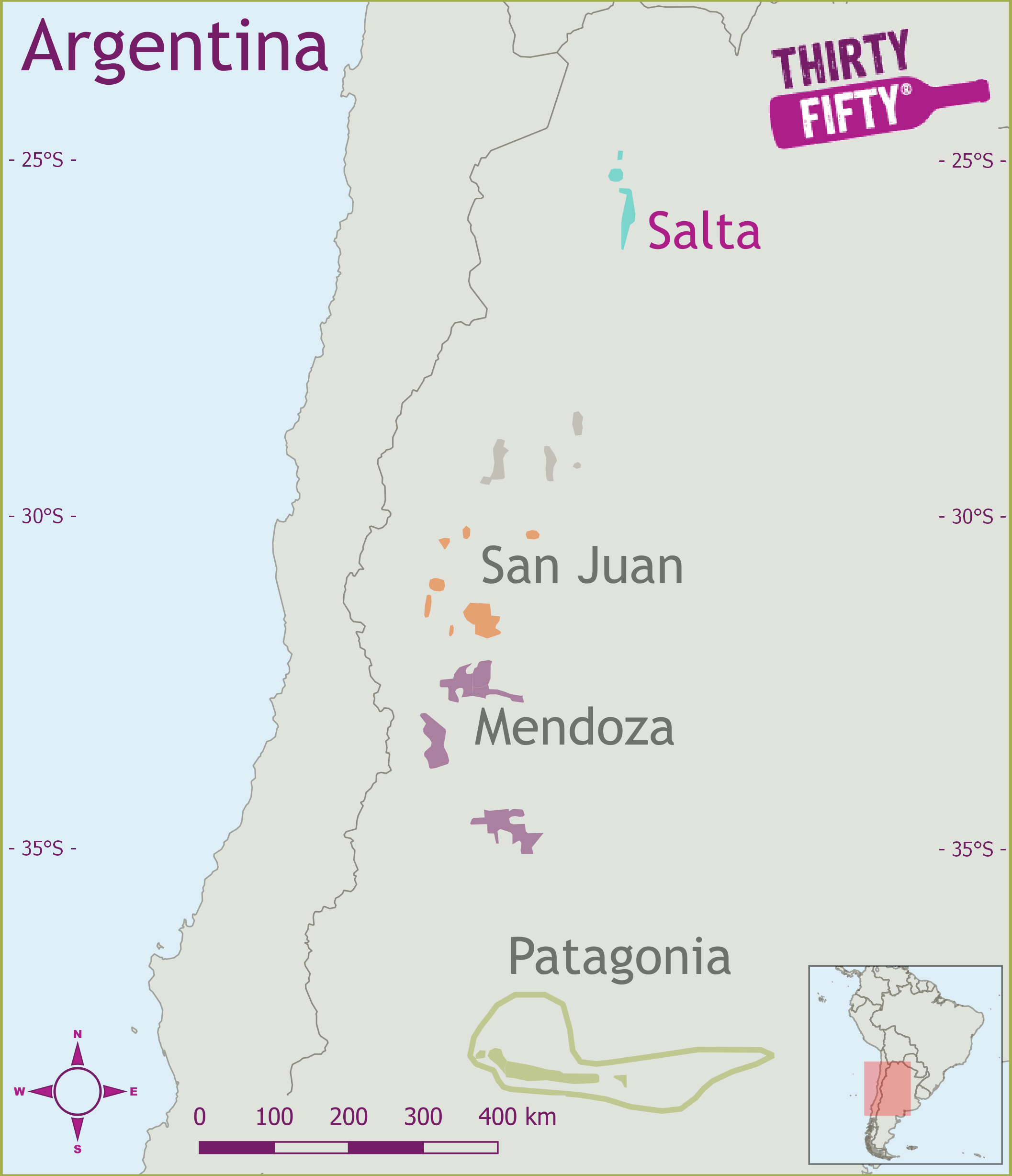Salta's Grapes: Cabernet Sauvignon, Malbec, Torrontes
Cabernet Sauvignon
Cabernet Sauvignon is perhaps the most famous red grape. Its home is Bordeaux where it is was created as a cross between Cabernet Franc (red grape) and Sauvignon Blanc (white grape). Since then its popularity has spread and it is grown all around the world. It prefers warmer climates to ripen fully and even in Bordeaux some years it does not ripen. That is why Cabernet Franc is also used in Bordeaux blends as it ripens faster. What makes Cabernet so popular is not its bouquet, which can range from blackcurrants to cigar box, but its structure, typically having both tannins and acidity to create a smooth feeling in the mouth. The structure allows the blending with other grapes, perhaps the most famous pairing is Cabernet Sauvignon and Merlot where the Cabernet provides the structure and the Merlot gives the wine the soft, rounded feel in the mouth. Recently Cabernet has been mixed with Sangiovese (Chianti's grape) to create the SuperTuscans.
Malbec
The black Malbec grape is used to make red wine in Bordeaux, the Loire and south west France, where it is grown under a number of different names. It is known as Pressac in Bordeaux, Auxerrois in Cahors and C�t in the Loire. In Argentina, it's adopted land, Malbec has been grown in quantity and is now successfully exported around the world. The grape can create both fruit-driven, plummy-like characteristics, but in Cahors it tends to gamey aromas and has quite considerable ageing potential. A mid-season ripener in Bordeaux, Malbec can bring very deep colour and ample tannins to create a great base for blended wines. It is also planted in New Zealand, Chile, California and Australia where it is used in blends rather than as a single varietal wine.
Torrontes
Torrontes is the white grape of Argentina – or perhaps we should say three grapes - and is cultivated in the provinces of Catamarca, La Rioja, Mendoza, Salta, San Juan and Rio Negro. Certainly, the grape with this name seems very well adapted to the arid growing conditions of the country and produces its best in the high, sandy vineyards of the Cafayate Valley (Salta). Torrontes Riojano is the most common sub-variety. This bigger-berried grape with compact bunch clusters takes its name from the northern province of La Rioja and is better suited for the production of fine wines. Torrontes Sanjuanino, planted in the province of San Juan, as its name suggests, and Torrontes Mendocino, from the province of Mendoza and also found in Rio Negro, are both better suited to producing fresh, youthful wines for early drinking. Torrontes is believed to have arrived from Spain with Basque settlers and has ties to the Muscat of Alexandria grape, which accounts for it sometimes displaying aromas similar to Muscat. That’s when it’s not showing Viognier-like hints of peach, flowers and orange fruit, or even slightly Gewurztraminer-esque characteristics of rose plus maybe jasmine and geranium. Whatever, grown well, this variety can be very fragrant, high in acidity and bursting with fruity and floral notes on the palate. Today in Spain Torrontes’ home is the Ribeiro region in the north but there is debate about whether there is, in fact, any relationship between these two grapes apart from a name. It’s also found in Chile - most of this is the Torrontes Riojano variety, which is known there as Torontel.
Wine Regions for Salta
- Cafayate
Salta
Key Grape Varieties: Cabernet Sauvignon, Malbec, Torrontes


